
GIUSEPPE DORMIO
DEPTH: 49 - 65 m
SKILL: Expert
Giuseppe Dormio (ex-Italia); cargo steamship; Italy, Giuseppe Dormio company, Bari, later in German service
Built: 1904 Napier & Miller Ltd shipyard, Glasgow, Great Britain
Sunk: 11th August 1944 (underwater mine)
Dimensions: l=74.73 m, w=10.98 m
Coordinates: 45.12778° N, 14.25312° E
Location: Vela Vrata Channel, about 200 m from the Brestova-Porozina ferry route
Access: 2/5 access is solely by boat (location is in the middle of the Vela Vrata Channel)
Visibility: 2/5 poor to good, rarely very good
Current: 3/5 moderate, occasionally strong
Flora and fauna: 4/5 varied life on and around the wreck, occasionally specimens of large fish
HISTORY:
The steamship Giuseppe Dormio was built long ago in 1904 in the shipyard of Napier & Miller in Glasgow. The customer was a Russian company FC Zvorono, and its first name was Italia. In 1928 it was sold to the Giuseppe Dormio company from Bari. After the capitulation of Italy the ship was taken over by the Germans, but they did not arm it from the beginning instead the Deutsche Mittelmeer Reederai company used it for coastal navigation. Sometime later the Dormio gained one anti-submarine gun on the stern.
The Vela Vrata Channel had for centuries been the main entrance to the port of Rijeka. For sailing ships, it offered enough space for crossing into the wind, whilst for the fastest and larger steamships it presented the easiest and quickest route.
In the First World War Austro-Hungary laid the first sea mines in the Vela Vrata passage, and the Italians during the Second World War also tried to prevent access to all approaches to Kvarner and the port of Rijeka with mines. After the capitulation of Italy in September 1943 the German Navy began to implement plans to strengthen the defence of the entire Eastern Adriatic region due to the threat of Allied landings, which in the meantime had captured southern Italy. In the following months they laid hundreds of mines in Vela Vrata, Srednja Vrata and Mala Vrata passages, and added some minefields in the middle of the Kvarner Bay.
However the first victims were not Allied ships, but ships in the German service. The steamship Giuseppe Dormio, on a trek from Pula to Rijeka, after one explosion which occurred on 11th August around 0330 hrs. sank at about 200 metres east of the Cape of Mašnjak. An explosion followed from the right side of the ship between the area of the drive engine and the steam boiler. Six Italian crew members of the ship were lost.
There is a great probability that the ship came across a mine from one of the blockades, which was laid in the Vela Vrata Channel. One surfaced submarine would without doubt have noticed a greater number of the ship’s crew members. The loss of the ship must therefore be attributed to incorrect navigational control. With the ship was lost about 800 tonnes of cement, which was intended for onshore advance military units for fortification.
WRECK CONDITION AND DIVING:
The wreck lies on a silty bottom in an upright position. Visibility is variable and can vary greatly due to the time of day and the current. Generally along the bottom there floats a murky layer, which varies from 1-2 metres up to ten metres, and at that time only the masts can be noticed, which protrude from the greenish cloud that rests over the wreck. The top of the mast is at a depth of 48-50 metres and is thoroughly overgrown with crustaceans. If we dive down to the deck, we have to dive into the murky layer and the visibility then suddenly decreases. The depth on the main deck is 59 metres. At the central section of the ship is a low superstructure on which lies one huge cylindrical object, on the upper section of which is a steel staircase. Large shoals of tiny blue fish which gather close to the wreck obscure the view. All parts of the ship are thickly overgrown with layers of crustaceans and sponges, for which wrecks are a favourite habitat, especially in places where there are strong currents that bring them plenty of food. Further towards the bow can be seen one opening of the forward cargo hold and the remains of the mast which extends upwards, covered with a large net that reaches all the way to the bow. In the cargo hold can still be clearly seen the neatly stacked bags of cement, which made up the ship's main cargo.
Returning towards the stern, near the funnel, we will notice a rectangular opening through which the interior of the engine room can be seen with the help of good lamps. It is very difficult to crawl into the interior, because the edges of the opening are narrow and overgrown with hard and sharp crustaceans so there is a danger of cutting open your dry diving suit, therefore maximum caution should be taken. Swimming above the flanks of the old steamship, it can be noted how unusually deeply embedded in the silt the wreck is, because the main deck is only a few metres above the seabed, where the depth is 65 metres. Since the ship was carrying 800 tonnes of cement, it is no surprise that the hull of the ship, due to the compacted cargo’s great weight, sank unusually deep into the sludgy silt at the bottom of Vela Vrata.
The description and illustrations are a courtesy of Danijel Frka and Jasen Mesić. Buy the whole book here: https://shop.naklada-val.hr/product_info.php?products_id=561
Built: 1904 Napier & Miller Ltd shipyard, Glasgow, Great Britain
Sunk: 11th August 1944 (underwater mine)
Dimensions: l=74.73 m, w=10.98 m
Coordinates: 45.12778° N, 14.25312° E
Location: Vela Vrata Channel, about 200 m from the Brestova-Porozina ferry route
Access: 2/5 access is solely by boat (location is in the middle of the Vela Vrata Channel)
Visibility: 2/5 poor to good, rarely very good
Current: 3/5 moderate, occasionally strong
Flora and fauna: 4/5 varied life on and around the wreck, occasionally specimens of large fish
HISTORY:
The steamship Giuseppe Dormio was built long ago in 1904 in the shipyard of Napier & Miller in Glasgow. The customer was a Russian company FC Zvorono, and its first name was Italia. In 1928 it was sold to the Giuseppe Dormio company from Bari. After the capitulation of Italy the ship was taken over by the Germans, but they did not arm it from the beginning instead the Deutsche Mittelmeer Reederai company used it for coastal navigation. Sometime later the Dormio gained one anti-submarine gun on the stern.
The Vela Vrata Channel had for centuries been the main entrance to the port of Rijeka. For sailing ships, it offered enough space for crossing into the wind, whilst for the fastest and larger steamships it presented the easiest and quickest route.
In the First World War Austro-Hungary laid the first sea mines in the Vela Vrata passage, and the Italians during the Second World War also tried to prevent access to all approaches to Kvarner and the port of Rijeka with mines. After the capitulation of Italy in September 1943 the German Navy began to implement plans to strengthen the defence of the entire Eastern Adriatic region due to the threat of Allied landings, which in the meantime had captured southern Italy. In the following months they laid hundreds of mines in Vela Vrata, Srednja Vrata and Mala Vrata passages, and added some minefields in the middle of the Kvarner Bay.
However the first victims were not Allied ships, but ships in the German service. The steamship Giuseppe Dormio, on a trek from Pula to Rijeka, after one explosion which occurred on 11th August around 0330 hrs. sank at about 200 metres east of the Cape of Mašnjak. An explosion followed from the right side of the ship between the area of the drive engine and the steam boiler. Six Italian crew members of the ship were lost.
There is a great probability that the ship came across a mine from one of the blockades, which was laid in the Vela Vrata Channel. One surfaced submarine would without doubt have noticed a greater number of the ship’s crew members. The loss of the ship must therefore be attributed to incorrect navigational control. With the ship was lost about 800 tonnes of cement, which was intended for onshore advance military units for fortification.
WRECK CONDITION AND DIVING:
The wreck lies on a silty bottom in an upright position. Visibility is variable and can vary greatly due to the time of day and the current. Generally along the bottom there floats a murky layer, which varies from 1-2 metres up to ten metres, and at that time only the masts can be noticed, which protrude from the greenish cloud that rests over the wreck. The top of the mast is at a depth of 48-50 metres and is thoroughly overgrown with crustaceans. If we dive down to the deck, we have to dive into the murky layer and the visibility then suddenly decreases. The depth on the main deck is 59 metres. At the central section of the ship is a low superstructure on which lies one huge cylindrical object, on the upper section of which is a steel staircase. Large shoals of tiny blue fish which gather close to the wreck obscure the view. All parts of the ship are thickly overgrown with layers of crustaceans and sponges, for which wrecks are a favourite habitat, especially in places where there are strong currents that bring them plenty of food. Further towards the bow can be seen one opening of the forward cargo hold and the remains of the mast which extends upwards, covered with a large net that reaches all the way to the bow. In the cargo hold can still be clearly seen the neatly stacked bags of cement, which made up the ship's main cargo.
Returning towards the stern, near the funnel, we will notice a rectangular opening through which the interior of the engine room can be seen with the help of good lamps. It is very difficult to crawl into the interior, because the edges of the opening are narrow and overgrown with hard and sharp crustaceans so there is a danger of cutting open your dry diving suit, therefore maximum caution should be taken. Swimming above the flanks of the old steamship, it can be noted how unusually deeply embedded in the silt the wreck is, because the main deck is only a few metres above the seabed, where the depth is 65 metres. Since the ship was carrying 800 tonnes of cement, it is no surprise that the hull of the ship, due to the compacted cargo’s great weight, sank unusually deep into the sludgy silt at the bottom of Vela Vrata.
The description and illustrations are a courtesy of Danijel Frka and Jasen Mesić. Buy the whole book here: https://shop.naklada-val.hr/product_info.php?products_id=561


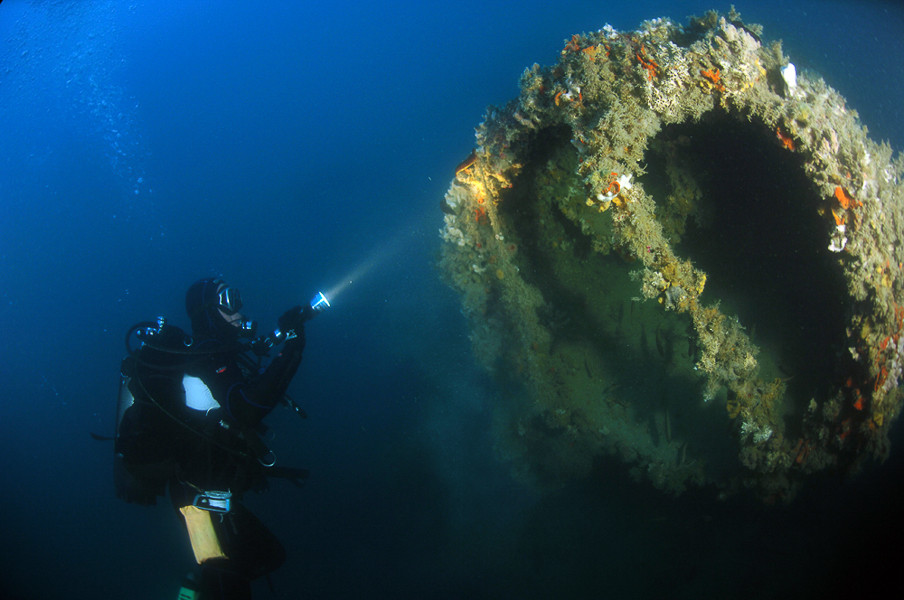
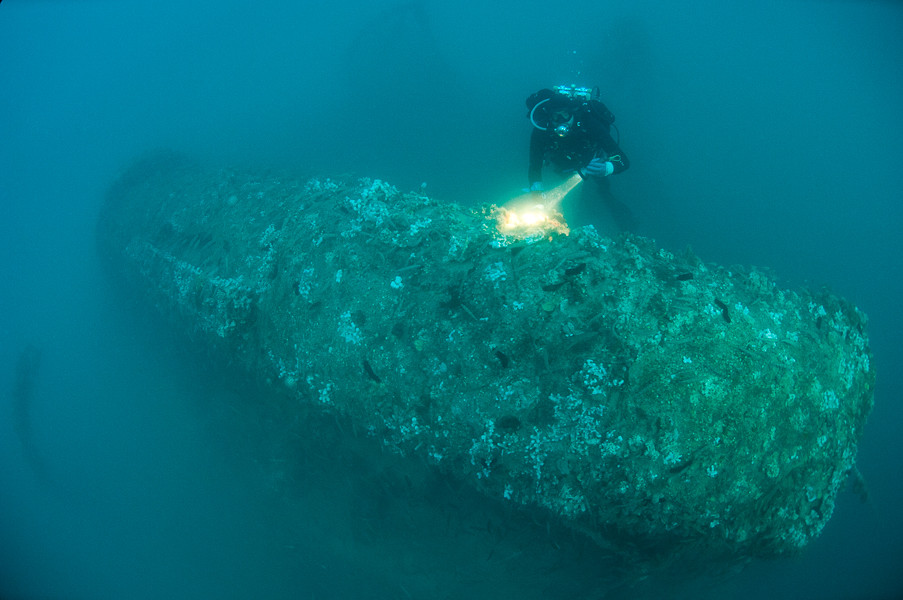
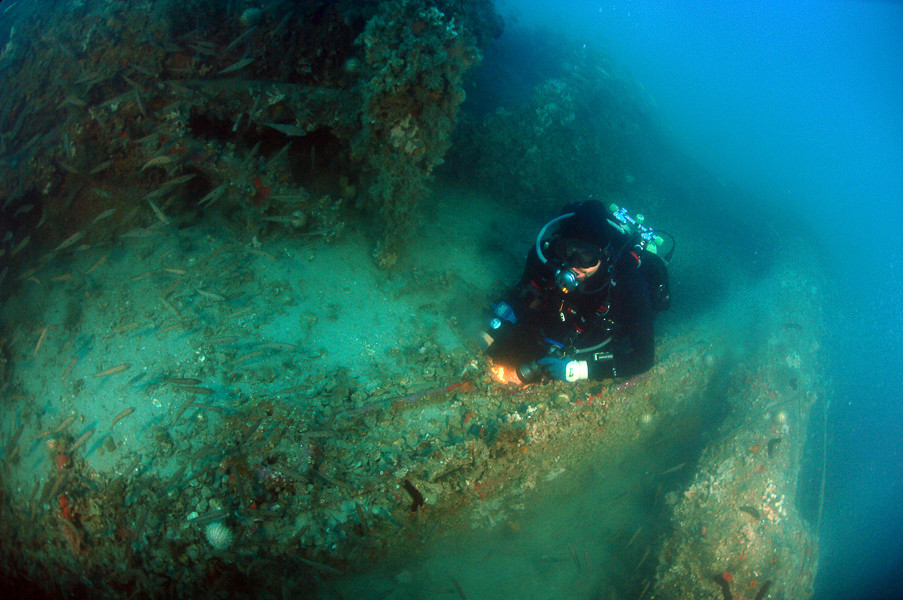

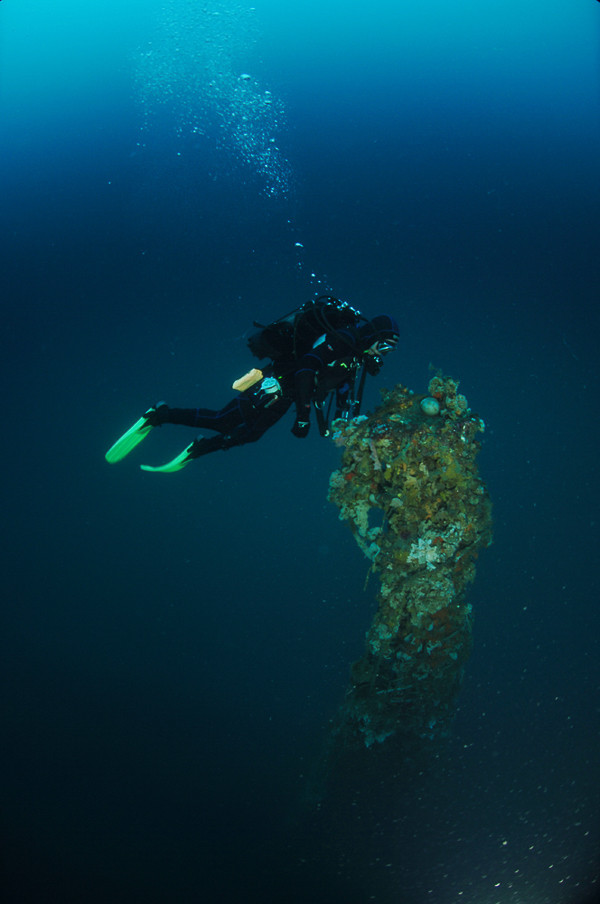
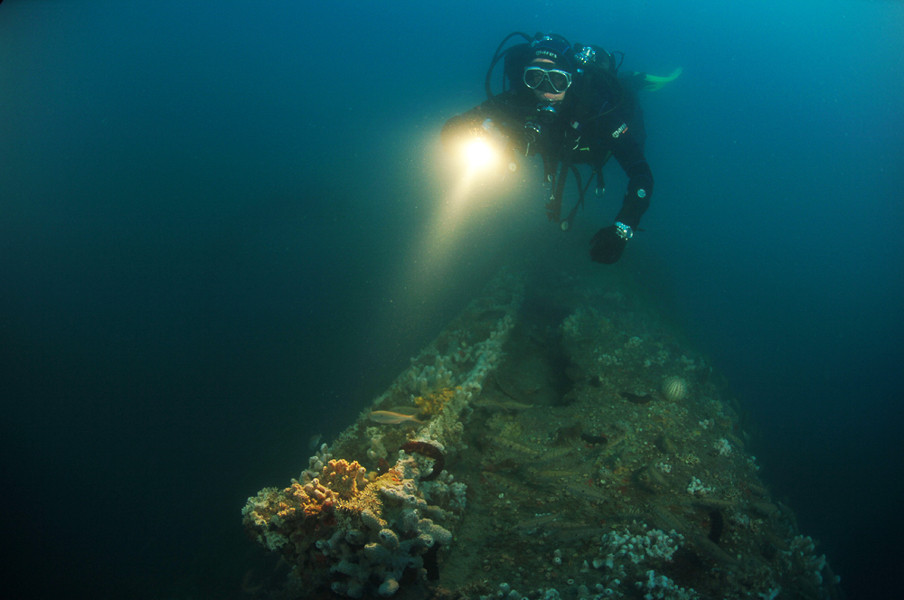
 The investment is co-financed by the Republic of Slovenia and the European Union from the European Regional Development Fund.
The investment is co-financed by the Republic of Slovenia and the European Union from the European Regional Development Fund.  H2O Globe BETA
H2O Globe BETA